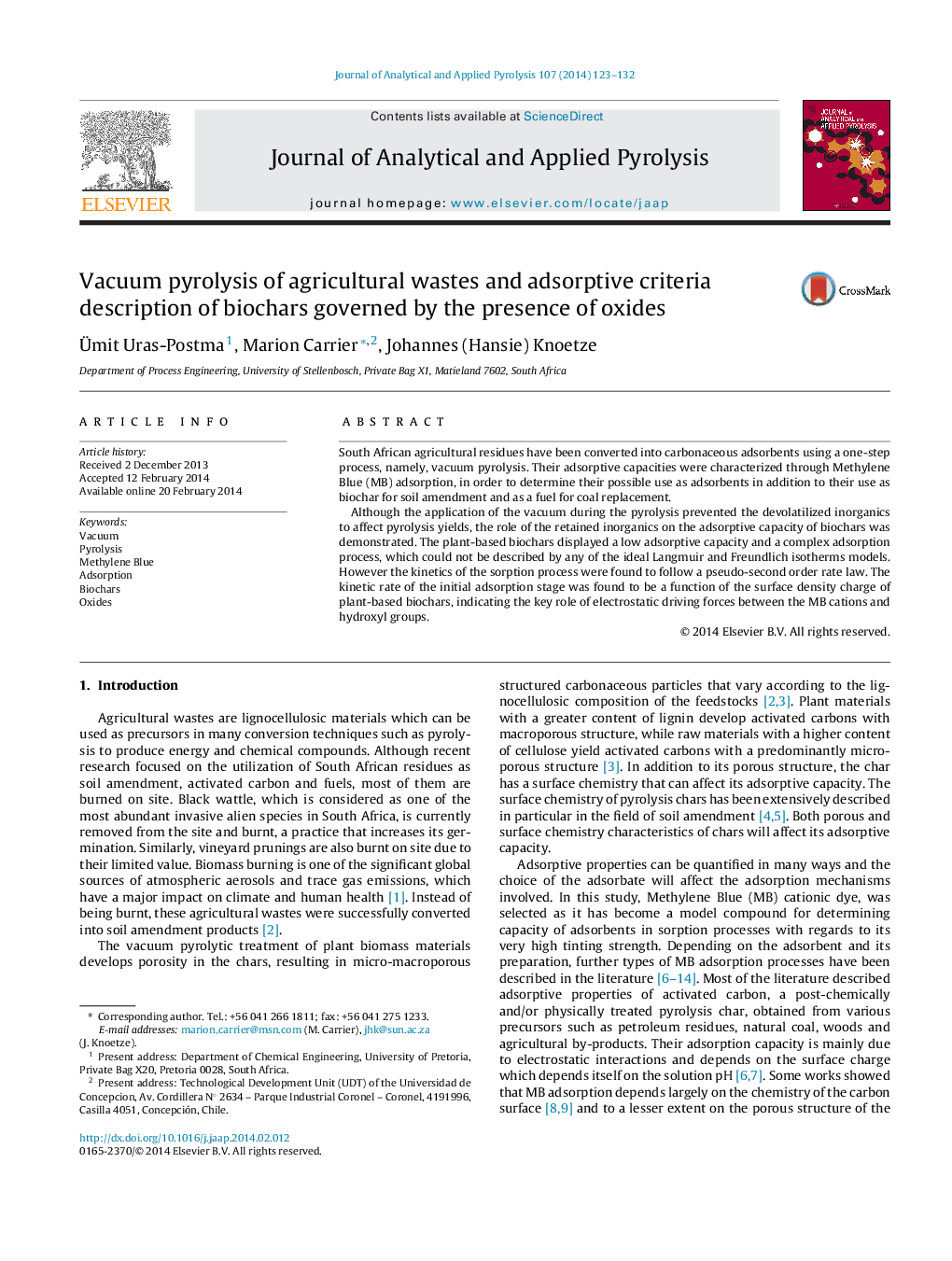| Article ID | Journal | Published Year | Pages | File Type |
|---|---|---|---|---|
| 1198295 | Journal of Analytical and Applied Pyrolysis | 2014 | 10 Pages |
•Plant-based biochars were produced from South African biomasses through vacuum pyrolysis.•Promotion of the formation of pyrolytic water under vacuum conditions.•Equilibrium and kinetics of the Methylene Blue adsorption process onto biochars were described.•Adsorption criteria of biochars were correlated to their chemical surface properties.•The biochars rich in inorganic oxides are capable of adsorbing ionic dyes through electrostatic interactions.
South African agricultural residues have been converted into carbonaceous adsorbents using a one-step process, namely, vacuum pyrolysis. Their adsorptive capacities were characterized through Methylene Blue (MB) adsorption, in order to determine their possible use as adsorbents in addition to their use as biochar for soil amendment and as a fuel for coal replacement.Although the application of the vacuum during the pyrolysis prevented the devolatilized inorganics to affect pyrolysis yields, the role of the retained inorganics on the adsorptive capacity of biochars was demonstrated. The plant-based biochars displayed a low adsorptive capacity and a complex adsorption process, which could not be described by any of the ideal Langmuir and Freundlich isotherms models. However the kinetics of the sorption process were found to follow a pseudo-second order rate law. The kinetic rate of the initial adsorption stage was found to be a function of the surface density charge of plant-based biochars, indicating the key role of electrostatic driving forces between the MB cations and hydroxyl groups.
